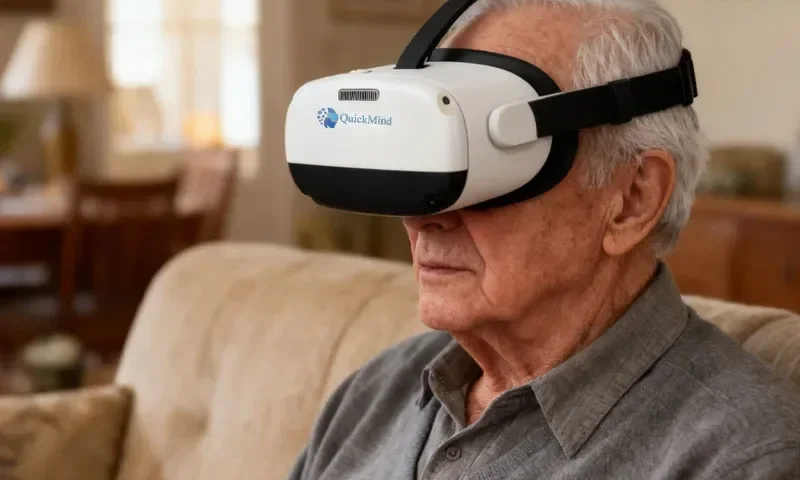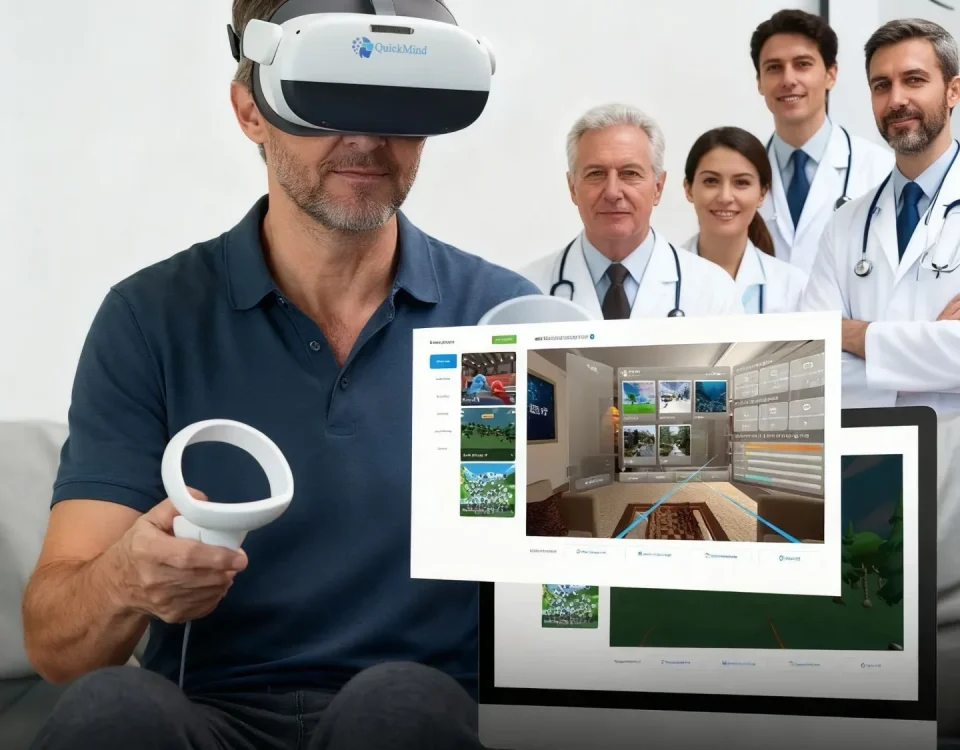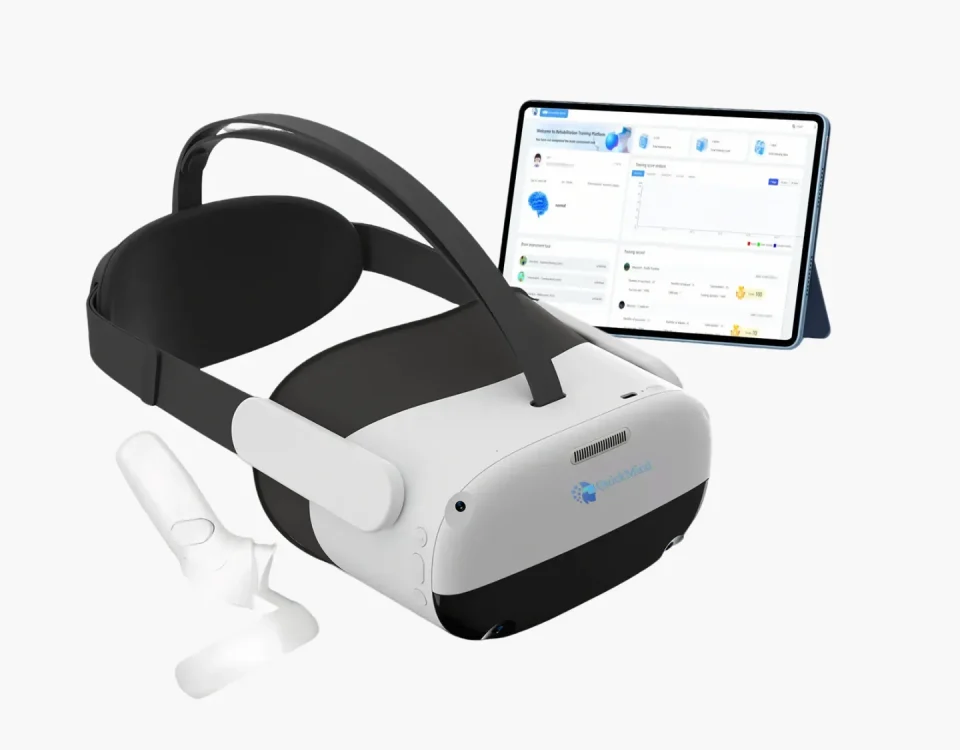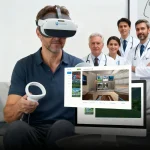
Digital Therapy Demystified: How It Helps
2025-10-13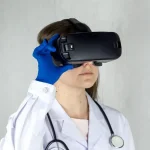
VR Cognitive Rehabilitation Rental
2025-10-28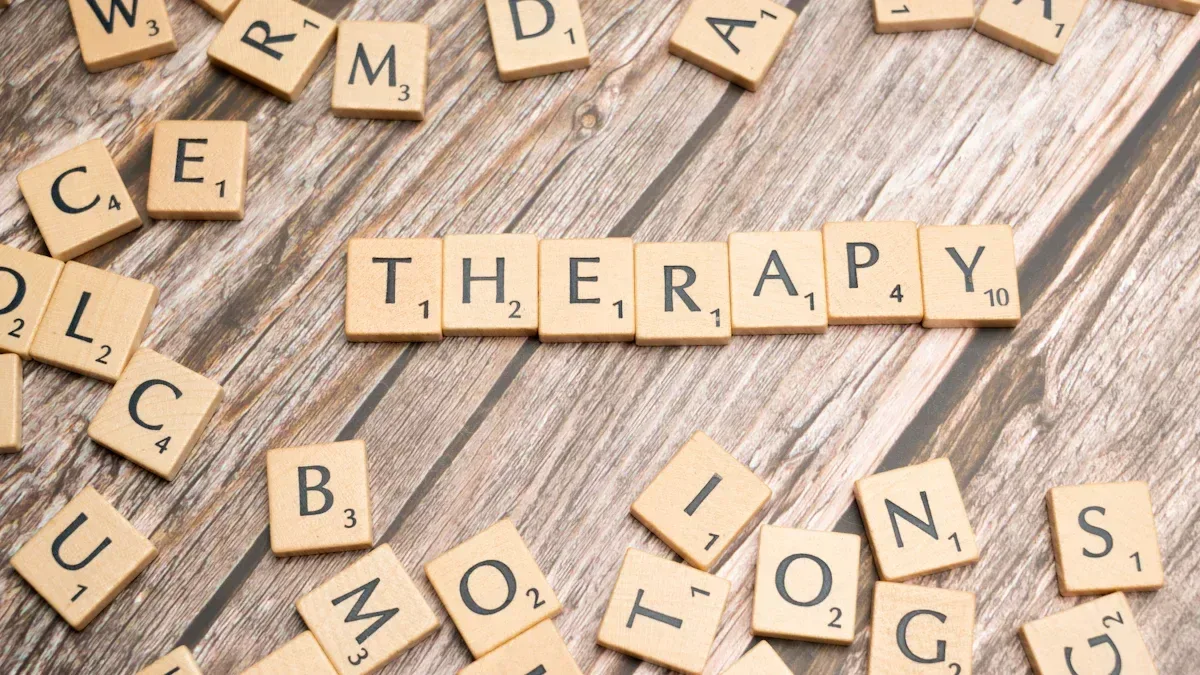
Cognitive rehabilitation helps you improve thinking, memory, and problem-solving skills after injury or illness. You start with an assessment that identifies your strengths and challenges. Therapy then targets specific goals, such as restoring lost abilities or finding new ways to manage daily tasks.
The median prevalence of cognitive impairment in older adults worldwide is 19%, but it can range from 5.1% to 41%.
| Goal Type | Description |
|---|---|
| Restorative | Improve specific cognitive functions. |
| Compensatory | Adapt to deficits, sometimes restoring abilities. |
| Overall Aim | Enhance cognitive functioning and daily life in family and community settings. |
Advanced tools like virtual reality and AI make therapy more engaging and personalized, helping you track progress and achieve better outcomes.
Key Takeaways
- Cognitive rehabilitation helps improve thinking, memory, and problem-solving skills after injury or illness.
- Therapy begins with an assessment to identify strengths and challenges, allowing for personalized treatment plans.
- The main goals of cognitive rehabilitation are to restore lost abilities, teach compensatory strategies, and maximize independence.
- Advanced tools like virtual reality and AI make therapy more engaging and help track progress effectively.
- Cognitive rehabilitation benefits those with brain injuries, strokes, dementia, and other neurological conditions.
- Regular practice of targeted exercises can significantly enhance daily functioning and overall quality of life.
- Home-based therapy options provide flexibility and comfort, allowing practice in real-life settings.
- Support from healthcare professionals and family is crucial for successful cognitive rehabilitation.
Cognitive Rehabilitation Overview
Definition
You can think of cognitive rehabilitation as a set of targeted interventions that help you address challenges with thinking, memory, and problem-solving. This approach supports people who experience mental processing issues due to chronic illnesses, brain injuries, or trauma such as stroke.
- You may relearn specific mental abilities that have been affected.
- You can strengthen abilities that remain intact.
- You might develop new skills to compensate for those that are lost.
Cognitive rehabilitation gives you practical tools to manage daily life more effectively.
Purpose
The main purpose of cognitive rehabilitation is to help you regain independence and improve your quality of life. Programs focus on three primary objectives:
| Objective | Description |
|---|---|
| Restoring lost cognitive functions | You work to regain abilities that have been impaired. |
| Teaching compensatory strategies | You learn techniques to work around existing cognitive challenges. |
| Maximizing functional independence | You gain skills to manage daily tasks and lead a productive life. |
You benefit from a program that aims to restore your abilities, teach you new ways to adapt, and help you stay as independent as possible.
Key Features
Cognitive rehabilitation stands out from other therapies because it focuses on your unique cognitive needs. Here are some features that make it different:
| Key Features of Cognitive Rehabilitation Therapy (CRT) | Distinction from Cognitive Behavioral Therapy (CBT) |
|---|---|
| Focuses on enhancing cognitive functioning and independence in patients with cognitive impairments due to brain injuries. | Primarily addresses emotional and psychiatric disorders. |
| Involves personalized treatment plans based on neuropsychological assessments. | Does not focus on cognitive rehabilitation skills. |
| Utilizes both restorative and compensatory strategies. | Techniques and goals differ significantly from CRT. |
- You receive a plan tailored to your cognitive and emotional profile.
- Neuropsychological assessments help your care team understand your strengths and challenges.
- These assessments also address common psychiatric symptoms that may follow brain injuries.
Tip: Personalized plans and regular assessments ensure that your therapy matches your goals and needs.
Cognitive rehabilitation uses both restorative and compensatory strategies, so you get a comprehensive approach that supports your recovery and daily functioning.
Who Benefits
Cognitive rehabilitation can help you if you face challenges with thinking, memory, or problem-solving. Many people experience these difficulties after certain medical events or because of ongoing health conditions. Understanding who benefits from this therapy can help you decide if it is right for you or someone you care about.
Conditions
You may need cognitive rehabilitation if you have one of several neurological or psychiatric conditions. These conditions often affect how you think, remember, or make decisions.
Brain Injury
A brain injury can change how your mind works. You might notice problems with attention, memory, or planning. Many people with acquired brain injury (ABI) use cognitive rehabilitation as part of their recovery. This therapy helps you regain lost skills and learn new ways to manage daily life.
Stroke
A stroke can interrupt blood flow to your brain. This event may cause sudden changes in your ability to think, speak, or remember. Cognitive rehabilitation supports you as you relearn important skills and adapt to new challenges.
Dementia
Dementia affects memory, reasoning, and judgment. If you or a loved one has dementia, cognitive rehabilitation can help maintain independence for as long as possible. The therapy focuses on strengthening remaining abilities and teaching strategies to cope with changes.
Other Disorders
Other neurological and psychiatric disorders can also lead to cognitive difficulties. You might benefit from therapy if you have conditions such as:
- Multiple sclerosis
- Parkinson’s disease
- Epilepsy
- Depression or anxiety with cognitive symptoms
Note: Each condition brings unique challenges. Cognitive rehabilitation offers personalized support to address your specific needs.
Signs to Consider
You may wonder if you need cognitive rehabilitation. Look for these common signs:
- Trouble paying attention or staying focused
- Memory problems that affect daily life
- Difficulty planning or following through with activities
- Struggles with self-care or managing routines
- Changes in behavior or mood
- Poor judgment or risky decisions
If you notice these signs in yourself or someone close to you, consider talking to a healthcare professional. Early support can make a big difference in your recovery and quality of life.
How Cognitive Rehabilitation Works
Assessment
You begin cognitive rehabilitation with a thorough assessment. This step helps your care team understand your strengths and challenges. The process includes several methods:
- You participate in interviews and review your medical records.
- Your team gathers psychosocial, developmental, medical, and psychiatric history.
- You complete neuropsychiatric assessments to measure your current abilities.
- Regular neuropsychological tests track your progress over time.
- You may use screening tools like the General Practitioner Assessment of Cognition, which helps identify cognitive impairment in primary care settings.
Modern technology now plays a key role in assessment. QuickMind® uses virtual reality and AI to deliver fast, consistent cognitive screenings. You experience immersive environments while the system tracks your eye movements and responses. This approach provides accurate results in just five minutes, matching gold-standard tools like MoCA with 95% consistency.
Tip: QuickMind® allows you to complete assessments at home or in a clinic, making it easier to monitor your cognitive health.
Therapy Types
Your therapy plan depends on your needs and the type of cognitive deficits you face. Two main approaches guide your rehabilitation:
| Type of Therapy | Description |
|---|---|
| Restorative treatment | You practice skills to improve them, such as memory exercises and problem-solving games. |
| Compensatory treatment | You learn to work around cognitive deficits using tools like smartphones and alarms. |
Your care team selects the right therapy based on your individual needs, the specific deficits you have, and the nature of your injury or condition.
Restorative
Restorative therapy helps you rebuild lost skills. You might work on memory, attention, or problem-solving through targeted exercises. For example, you practice recalling information or solving puzzles. Research shows that cognitive remediation can produce consistent and lasting improvements in cognitive functioning. Studies by Wykes et al. (2011) and McGurk et al. (2007a) found medium to strong effects on cognitive abilities.
Compensatory
Compensatory therapy teaches you strategies to manage daily life despite cognitive challenges. You use external aids like alarms, calendars, or smartphone reminders. You learn self-instruction techniques and feedback methods, such as using mirrors or video to monitor your behavior. These strategies help you stay organized and independent.
Note: Combining restorative and compensatory approaches often leads to better outcomes.
Techniques
You use a variety of techniques to strengthen your cognitive skills. These methods target memory, attention, and executive function.
- You develop planning and organization skills.
- You practice problem-solving and strategy formation.
- You learn to regulate your behavior and increase self-awareness.
- You use written strategies and electronic devices to support memory and attention.
- You follow systematic problem-solving procedures.
- You receive feedback through mirrors or video to improve self-monitoring.
- You use adaptive methods, such as internal or external cognitive devices, to assist with daily tasks.
Computerized cognitive programs, including those delivered through QuickMind®, are increasingly popular. These programs help you improve executive functions and attention, especially as you age. Studies show that brain plasticity-based training can boost memory and processing speed, with benefits lasting for months.
QuickMind® stands out by offering immersive VR environments that make therapy engaging. The AI personalizes your training plan, adjusting exercises in real time to match your abilities and goals. You receive automated progress tracking, so you and your care team can see your improvements and adjust your plan as needed.
| Personalization Feature | QuickMind | Traditional Methods |
|---|---|---|
| Assessment | AI and eye-tracking | Neuropsychological evaluation |
| Plan Adjustment | Real-time, data-driven | Manual, therapist-led |
| Session Experience | Immersive VR, adaptive difficulty | Paper tasks, group or solo therapy |
| Progress Tracking | Automated, continuous | Therapist observation |
| Motivation | Dynamic, engaging scenarios | Supportive, social environment |
Tip: Personalized training plans are developed with input from rehabilitation experts. Your plan includes tasks chosen for your specific cognitive needs, modeled and applied to help you reach your goals.
Cognitive rehabilitation adapts to your unique profile. You benefit from a combination of expert guidance, advanced technology, and ongoing assessment. This approach helps you regain independence and improve your quality of life.
Therapy Settings
Clinic
You may start your therapy in a clinic. Clinics offer a structured environment with access to trained professionals and specialized equipment. Therapists guide you through exercises and monitor your progress closely. You benefit from face-to-face support and immediate feedback. Clinics often use advanced tools, including virtual reality systems like QuickMind®, to create immersive and interactive sessions. These settings help you stay motivated and ensure that your therapy matches your needs.
Home
You can also continue your therapy at home. Home-based programs give you flexibility and comfort. You practice skills in your own environment, which can make the exercises feel more relevant to your daily life. Many people find that home therapy fits better into their routines. QuickMind® supports home use with mobile systems that deliver the same immersive VR experiences you find in clinics. You can complete quick assessments, follow personalized training plans, and track your progress—all from home.
Note: The effectiveness of home-based interventions depends on several factors. Programs work best when they match your interests and abilities, involve caregivers, and last long enough to make a difference. Some studies show significant benefits, while others find little improvement. Most gains are specific to the tasks you practice, not always generalizing to all areas of thinking.
| Findings | Details |
|---|---|
| Mixed Evidence | Some studies show significant benefits, while others report no improvement in cognitive outcomes. |
| Influencing Factors | Effectiveness is influenced by intervention duration, caregiver involvement, and individualization to the interests and abilities of PLWD. |
| Specificity of Benefits | Benefits are often task-specific and not generalizable to overall cognition. |
You may see the best results when you combine home therapy with support from professionals and family.
Technology Use
Technology now plays a key role in therapy settings. Mobile systems and remote monitoring tools help you stay connected with your care team, whether you are at home or in a clinic. QuickMind® uses real-time AI and eye-tracking to adjust your training plan as you progress. Therapists can view your performance data, identify trends, and update your plan remotely. This approach ensures you receive continuous, personalized care.
- Mobile technology improves your access to therapy.
- You practice skills in real-life settings, making your training more effective.
- Apps and digital platforms help monitor your progress and keep you engaged.
| Feature | Description |
|---|---|
| Real-time Progress Tracking | Therapists access your performance data in real-time, identifying trends and challenges. |
| Personalized Treatment Plans | Your care team creates individualized plans based on collected data, ensuring continuous progress. |
| Remote Support and Feedback | Therapists provide guidance and encouragement through digital communication. |
| Motivation and Engagement | Interactive exercises keep you engaged and motivated, which is essential for effective therapy. |
QuickMind® bridges the gap between clinic and home. You benefit from mobile access, remote monitoring, and data-driven adjustments, all designed to support your recovery and independence.
Exercises and Strategies
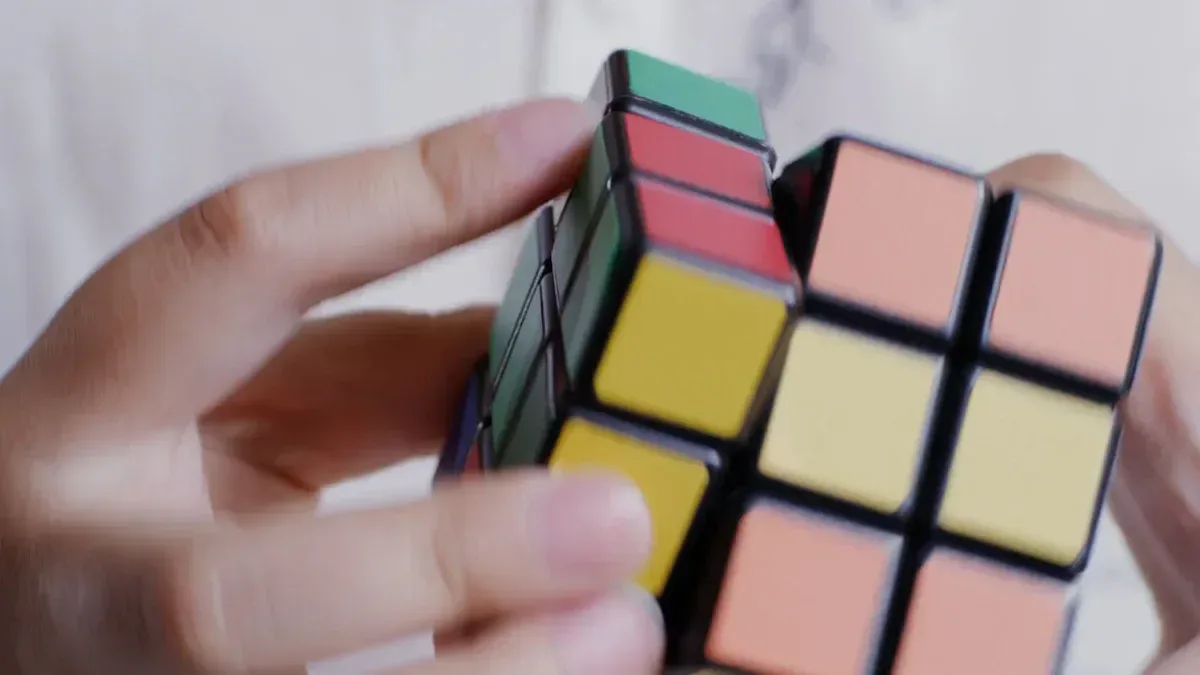
Memory
You can strengthen your memory through targeted exercises. Many programs use games and activities that challenge both short-term and long-term recall. For example, you might play memory games with picture cards, sequence tasks, or storytelling. These activities help you remember details and improve your ability to organize information.
- Try recalling names, events, or items after a short delay. This practice boosts your retention.
- Use card sequence exercises. Memorize and recall the order of playing cards, then increase the difficulty as you improve.
- Engage in tasks that focus on specific thinking skills, especially if you have experienced a traumatic brain injury.
Tip: Regular practice with these exercises helps you preserve and enhance your cognitive abilities.
Attention
You can train your attention using different strategies. Therapists often recommend activities that restore your ability to focus and manage distractions. Some exercises use computer-based tasks or pencil-and-paper activities to help you concentrate.
| Strategy Type | Description |
|---|---|
| Restitution Approach | Complete tasks designed to restore attention, such as computerized activities and written exercises. |
| Compensatory Strategies | Learn techniques to manage attention challenges in your daily life. |
Metacognitive strategy training works well for people with mild to moderate attention deficits. You practice using everyday activities to improve your focus. For example, you might learn to break tasks into smaller steps or use reminders to stay on track.
- Everyday task-specific training helps you apply attention skills in real-life situations.
- Training in dual-tasking can improve your ability to handle more than one activity at a time, especially when the tasks are similar.
Note: Computer-based tasks that do not relate to daily life may not help you improve your attention in practical situations.
Problem-Solving
You can boost your problem-solving skills with exercises that challenge both your mind and body. Activities like exergaming combine physical movement with mental tasks, requiring you to recall information and recognize patterns. These exercises enhance your overall cognition.
| Exercise Type | Cognitive Benefits |
|---|---|
| Exergaming | Improves general cognition by combining physical and mental challenges. |
| Mind-body exercises | Strengthen memory through attention and memorization of movement sequences. |
| Tai Chi | Develops spatial awareness and memory by learning movement patterns. |
| Yoga | Enhances cognitive function through breath control and mind-body connection. |
You might practice Tai Chi to memorize sequences and improve spatial awareness. Yoga helps you focus on breathing and movement, which supports mental clarity. Mind-body exercises encourage you to pay attention and remember steps, making them valuable for cognitive health.
Tip: Choose activities that you enjoy and that challenge you in new ways. Consistent practice leads to better problem-solving skills and greater independence.
Daily Skills
You use daily skills to manage your routine, care for yourself, and interact with others. These skills include dressing, bathing, eating, and moving around your home. You also rely on daily skills to handle money, prepare meals, and keep your living space organized. When you face challenges with thinking or memory, you may struggle with these activities. Training and practice can help you regain independence and confidence.
Therapists often design exercises that focus on real-life tasks. You might learn step-by-step methods for getting dressed or making breakfast. You practice breaking down complex activities into smaller, manageable steps. This approach helps you remember what to do next and reduces frustration. You also use checklists, visual cues, and reminders to stay on track.
Structured skills training gives you the chance to repeat important tasks until you master them. You work on activities of daily living (ADLs) such as grooming, toileting, and feeding yourself. Therapists guide you through each step and provide feedback. You build routines that make daily life easier. Research shows that skills training improves your ability to complete ADLs and increases your independence.
Non-pharmacological therapies, such as cognitive stimulation, also support your daily functioning. You participate in group activities, games, and social interactions that challenge your mind. These therapies aim to maintain or improve your autonomy. Studies report significant improvement in daily living scores, such as the Barthel Index, when you engage in cognitive stimulation programs.
Here is a summary of interventions and their effectiveness:
| Intervention Type | Outcome Measure | Effectiveness Evidence |
|---|---|---|
| Cognitive Stimulation | Barthel Index Score | Significant improvement (p = 0.006) |
| Structured Skills Training | Activities of Daily Living (ADLs) | Reported usefulness in improving ADLs |
| Non-Pharmacological Therapies | Functionality and Independence | Aimed to maintain or improve ADLs and autonomy |
You may notice that the need for rehabilitation interventions is rising, especially for people with dementia. Therapists use structured skills training to teach ADLs. Many studies highlight the benefits of these programs, although researchers continue to look for more evidence.
- You practice daily routines to build confidence.
- You use visual aids and reminders to support memory.
- You join group activities to improve social skills and independence.
- You receive feedback and encouragement from therapists and caregivers.
Tip: Consistent practice and support help you maintain your independence and improve your quality of life.
Effectiveness
Research
You may wonder how well cognitive rehabilitation works for different conditions. Recent meta-analyses show that this approach can make a real difference in your daily life. Researchers found that cognitive rehabilitation leads to meaningful improvements in quality of life and occupational performance, especially for people with Alzheimer’s disease. Clinical trials reveal moderate to large effects, with patients reporting better management of everyday tasks and higher satisfaction.
- You see a significant boost in quality of life scores.
- Occupational performance levels improve, helping you handle daily responsibilities.
- The focus on practical strategies for daily life management often brings more benefits than targeting specific cognitive functions.
These findings suggest that you can expect positive changes in how you manage routines and interact with others, even if gains in specific cognitive skills remain limited.
Success Stories
Many people experience life-changing results through cognitive rehabilitation. You can look at several notable examples to understand the impact.
| Intervention Type — Description — Outcomes | | Gamified Cognitive Training — Patients used the ‘Wizard’ game for 30 minutes daily for 2 weeks. — Significant improvement in working memory abilities and verbal learning capacity. | | Combined Executive Function Intervention — Integrated computerized cognitive training with metacognitive strategy training. — Enhanced cognitive performance and high participant satisfaction. | | Computer-Assisted Cognitive Rehabilitation — Included various tasks for auditory, visual, and working memory processing. — Notable improvements in cognitive function, especially in stroke patients. |
You might use interactive games or computer-based programs to strengthen your memory and attention. Many participants report greater confidence and satisfaction after completing these interventions. Stroke patients often see marked improvements in cognitive function, which helps them regain independence.
Considerations
You should think about several factors before starting cognitive rehabilitation. Your success depends on your unique situation and the support you receive.
- Type of disease: Your condition influences which strategies work best.
- Functional level: Your current abilities shape your therapy plan.
- Prevalence and treatment period: The length and frequency of therapy affect outcomes.
- Medication compliance: Following your prescribed treatments supports your progress.
- Family support: Encouragement from loved ones helps you stay motivated and engaged.
You benefit most when your therapy matches your needs and you have strong support from family and healthcare professionals. Careful planning and regular assessment ensure that you reach your goals and maintain progress over time.
Getting Started
Finding Help
You can begin your journey by reaching out to local healthcare providers or mental health centers. These professionals can guide you toward programs that match your needs. Many people find it helpful to ask about both standalone and combined rehabilitation services. If you want to focus on specific skills, look for programs that offer targeted support in those areas. Universities with psychology or rehabilitation programs sometimes provide low-cost services. You may also find support through brain injury organizations or community nonprofits.
Tip: Ask your doctor or therapist for recommendations. They often know about local resources and can help you connect with the right specialists.
First Steps
Starting your path to better cognitive health involves a few important actions. You can follow these steps to make the process easier:
- Find a suitable program that fits your goals and needs.
- Engage in specific exercises, such as rhythm matching, computational memory tasks, and fine motor skills practice.
- Use your non-dominant hand for certain activities to stimulate different parts of your brain.
- Practice attention to sensory inputs by writing down or saying what you notice in your environment.
- Participate in memory exercises, like picture recall and naming therapy, to strengthen your memory.
You should consider whether you want a program that stands alone or one that combines with other therapies. Some people benefit from additional rehabilitation focused on areas like speech, movement, or daily living skills. Your healthcare provider can help you decide which approach works best for you.
Note: Consistency matters. Practicing these exercises regularly helps you see better results over time.
Costs
Paying for therapy can feel overwhelming, but many options exist to help you manage expenses. You may have access to insurance coverage for rehabilitation services. State vocational rehabilitation agencies often help people return to work or school. Some universities offer affordable services through their training clinics. Nonprofits and organizations like the United Way sometimes provide grants for therapy. Crowdfunding platforms, such as GoFundMe, allow you to raise money for costs not covered by insurance.
You might also find research studies that offer free treatment. Many providers offer payment plans or reduced fees based on your income. Medicaid coverage varies by state, and some states have expanded benefits for rehabilitation. Workers’ compensation may cover therapy for work-related injuries. Auto insurance policies, especially those with Personal Injury Protection, can help if your injury resulted from a car accident. TBI Trust Funds provide extra resources for people affected by traumatic brain injuries.
| Financial Assistance Option | Description |
|---|---|
| Insurance | Covers many rehabilitation services |
| State Agencies | Help with returning to work or school |
| University Clinics | Offer low-cost therapy options |
| Nonprofit Grants | Provide financial support |
| Crowdfunding | Raise funds for uncovered costs |
| Research Studies | May offer free treatment |
| Payment Plans | Adjust fees based on your income |
| Medicaid | Coverage varies by state |
| Workers’ Compensation | For work-related injuries |
| Auto Insurance | For accident-related injuries |
| TBI Trust Funds | Extra help for brain injury recovery |
Tip: Ask your provider about all available financial assistance. Many people qualify for more help than they expect.
You gain many benefits from this process, including improved daily functioning, enhanced quality of life, and increased brain activation.
| Benefit | Description |
|---|---|
| Improved Daily Functioning | You learn strategies to manage everyday challenges. |
| Enhanced Quality of Life | Studies show a positive impact on your well-being and independence. |
| Increased Brain Activation | Training can boost your brain’s ability to adapt and learn. |
Modern technology, such as VR-based systems, offers personalized therapy and real-world practice.
| VR Advantage | Description |
|---|---|
| Personalized Therapy | VR tailors activities to your needs, keeping you motivated. |
| Real-World Relevance | You practice skills in lifelike scenarios for better results. |
Take the first step toward better cognitive health. Seek professional guidance and explore new tools that support your journey.
FAQ
What is cognitive rehabilitation?
You use cognitive rehabilitation to improve thinking, memory, and problem-solving skills after injury or illness. This therapy helps you regain independence and manage daily tasks more effectively.
Who can benefit from cognitive rehabilitation?
You may benefit if you have experienced a brain injury, stroke, dementia, or other neurological conditions. People with attention, memory, or planning difficulties often see improvements.
How does QuickMind® make therapy different?
QuickMind® uses virtual reality and AI to create personalized, engaging therapy sessions. You receive real-time feedback and progress tracking, whether you train at home or in a clinic.
Can I do cognitive rehabilitation at home?
Yes! Many programs, including QuickMind®, offer home-based therapy. You practice skills in your own environment and track your progress with mobile systems.
How long does cognitive rehabilitation take?
Your therapy duration depends on your needs and goals. Some people see results in weeks, while others continue for months. Regular practice leads to better outcomes.
What types of exercises will I do?
You complete memory games, attention tasks, problem-solving activities, and daily living skills training. These exercises help you strengthen specific cognitive abilities.
Is cognitive rehabilitation covered by insurance?
Many insurance plans cover cognitive rehabilitation. You should check with your provider to confirm your benefits and available financial assistance.


